When we think of insects, we more often than not, think of them as pests. Perhaps true, but only to a limited extent. This opinion is largely because we have been exposed to very few insects… most that cause people a spot of bother. These could be the omnipresent cockroach, the mosquito that chooses to sing in your ears or the ant that may give you a sharp nip! However, if we just park those stereotyped opinions we will realize that insects are very diverse and they operate at various levels.
Very few of us possibly even realize that insects account for well over half of all organisms on planet Earth. This means that there are more than a million species of known insects. Now, that is a huge number. They also can be seen pretty much in every possible habitat – from the hottest to the wettest to the coldest places on Earth. This includes those that inhabit the cold climes of Antarctica. That said, obviously, not all of them perform the same role in their respective environments.
Here, in this photo story, we will explore the role of insects as predators.
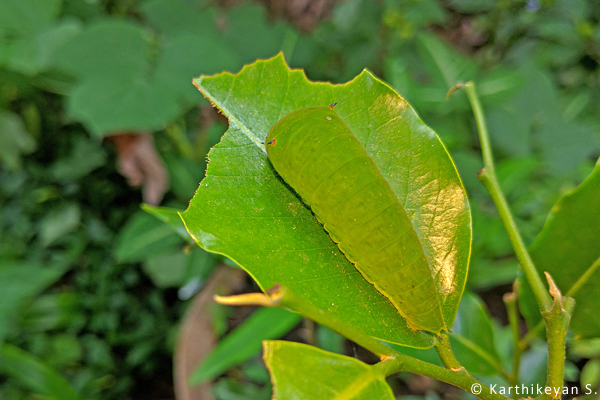
Many insects are predators of plants. For eg. caterpillars feed on the leaves of their host plants. Insects that feed on plants become very important as they are the primary consumers in the web of life. The caterpillars are then prey to a multitude of organisms, starting all the way from other insects to birds to mammals.
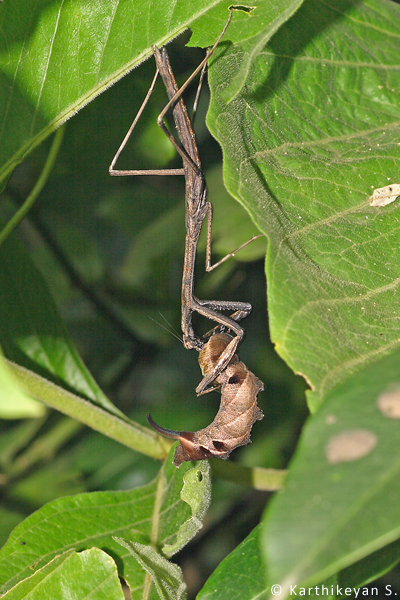
A praying mantis is a fine predator. It is well equipped for the job and can be seen devouring a variety of creatures as prey. The hawk-moth larva is just one example.
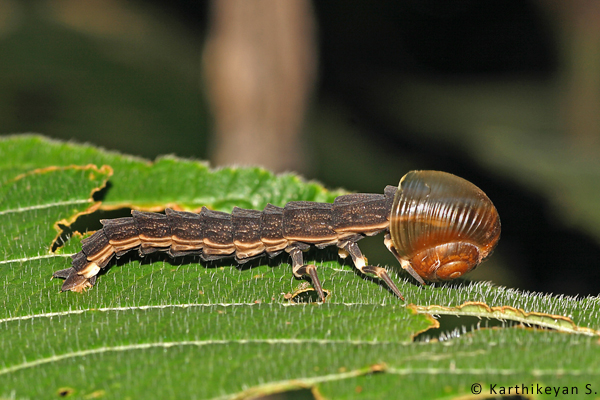
Even the very innocuous glow worm makes a meal of the herbivorous snail. It manages to get past the defences of the snail and feed on its soft body . More about glow worms here.
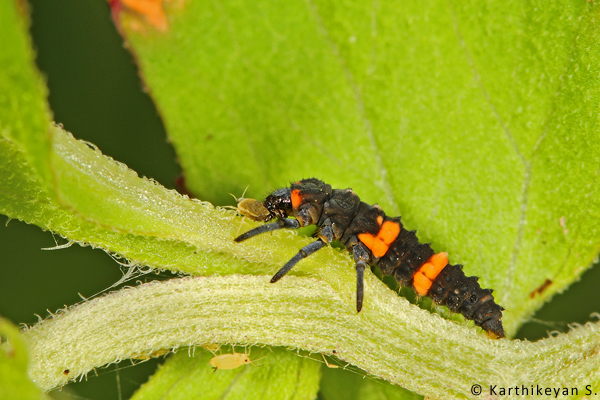
Aphids are tiny insects that feed on plant sap. If left uncontrolled, they can assume pest proportions damaging the plant. There are other insects that keep the aphids under control. The Coccinellid larvae (Ladybird beetle larvae) are predators and play an important role in this process.
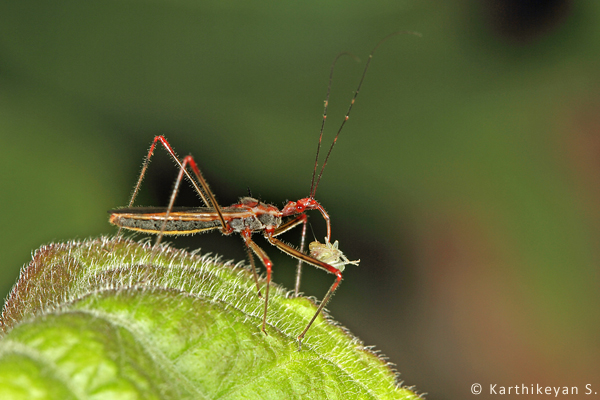
The Assassin bugs are notorious as predators. They too can take a toll on aphids.
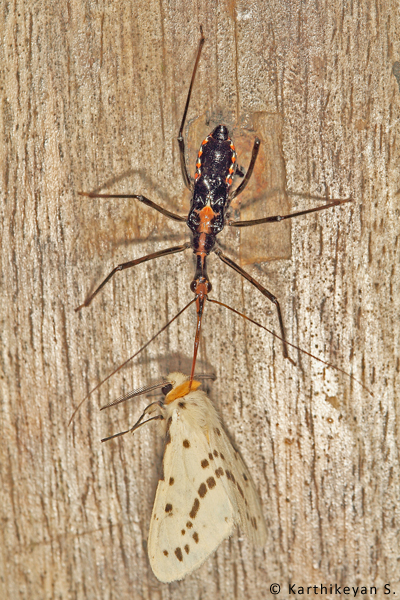
An Assassin bug can take prey much larger than themselves. As can be seen in this image, it is sucking a moth dry.
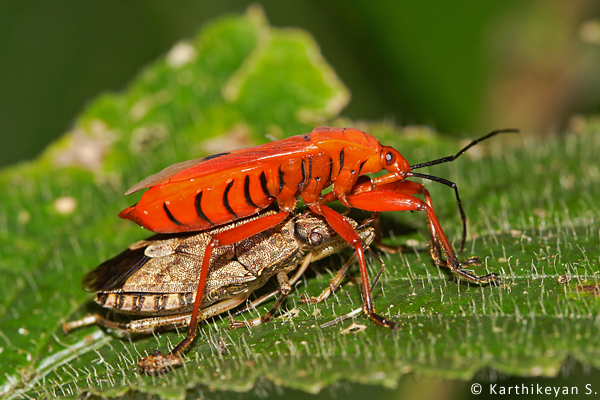
While in this case, the prey is another bug. The Assassin Bugs use an interesting method to feed on their prey. More about Assassin Bugs
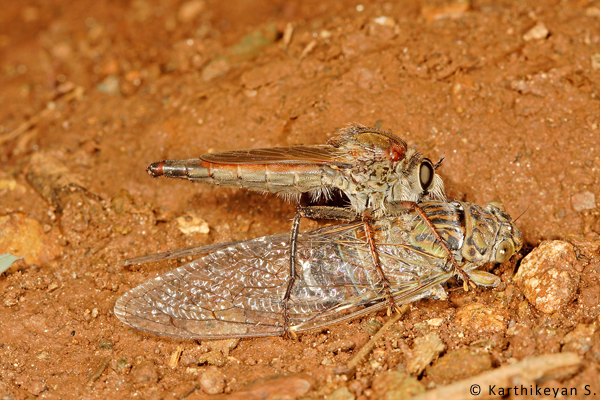
Robberflies are an interesting group of insects. These too, like many other predators can take prey much larger than themselves. A hapless cicada known for the loud noise that it makes is no match for the powerful robberfly. More about Robberflies
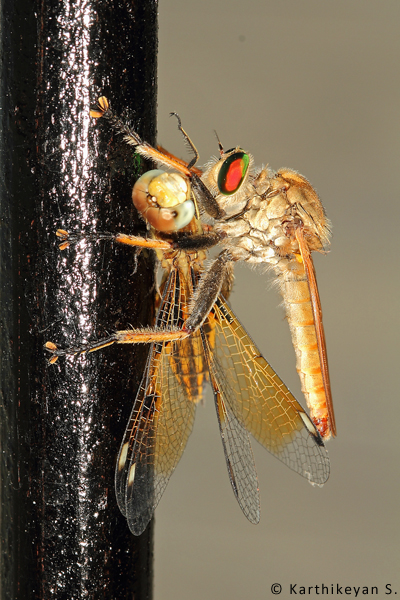
The dragonfly, itself a predator, can be beaten at its own game at times by the robberfly. Read more here.
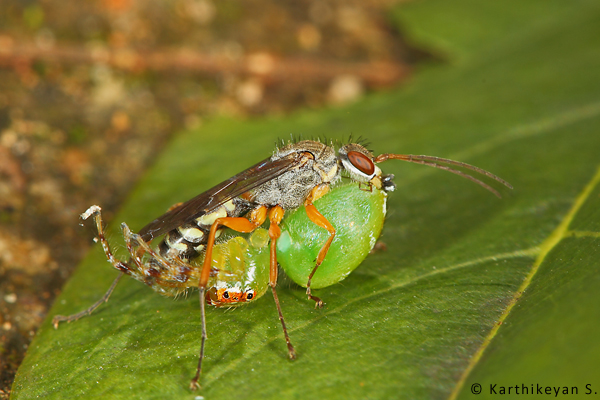
Wasps are also insects that one encounters even in an urban setting. Many are strong and powerful predators. Some species of wasps specialize in providing paralysed spiders for their young while others provide grasshoppers, caterpillars, etc. About Parental care in wasps.
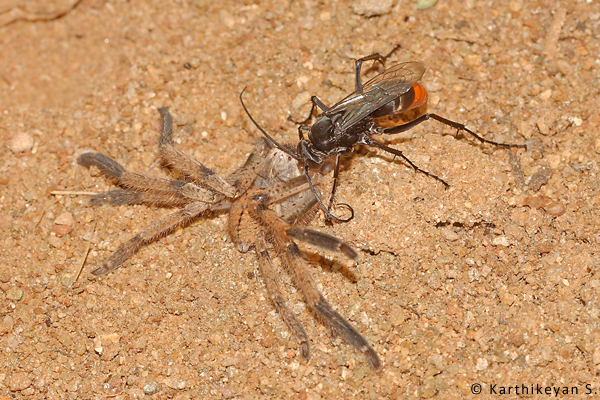
Some even deal with really large prey. Once paralyzed, they drag it over a long distance and past several hurdles until they reach the nesting site.
Insects, as it can be seen, perform the role of both the prey and predator. However, it is important for us to realize that they also perform many other roles and that all the roles are necessary to maintain the balance in Nature.